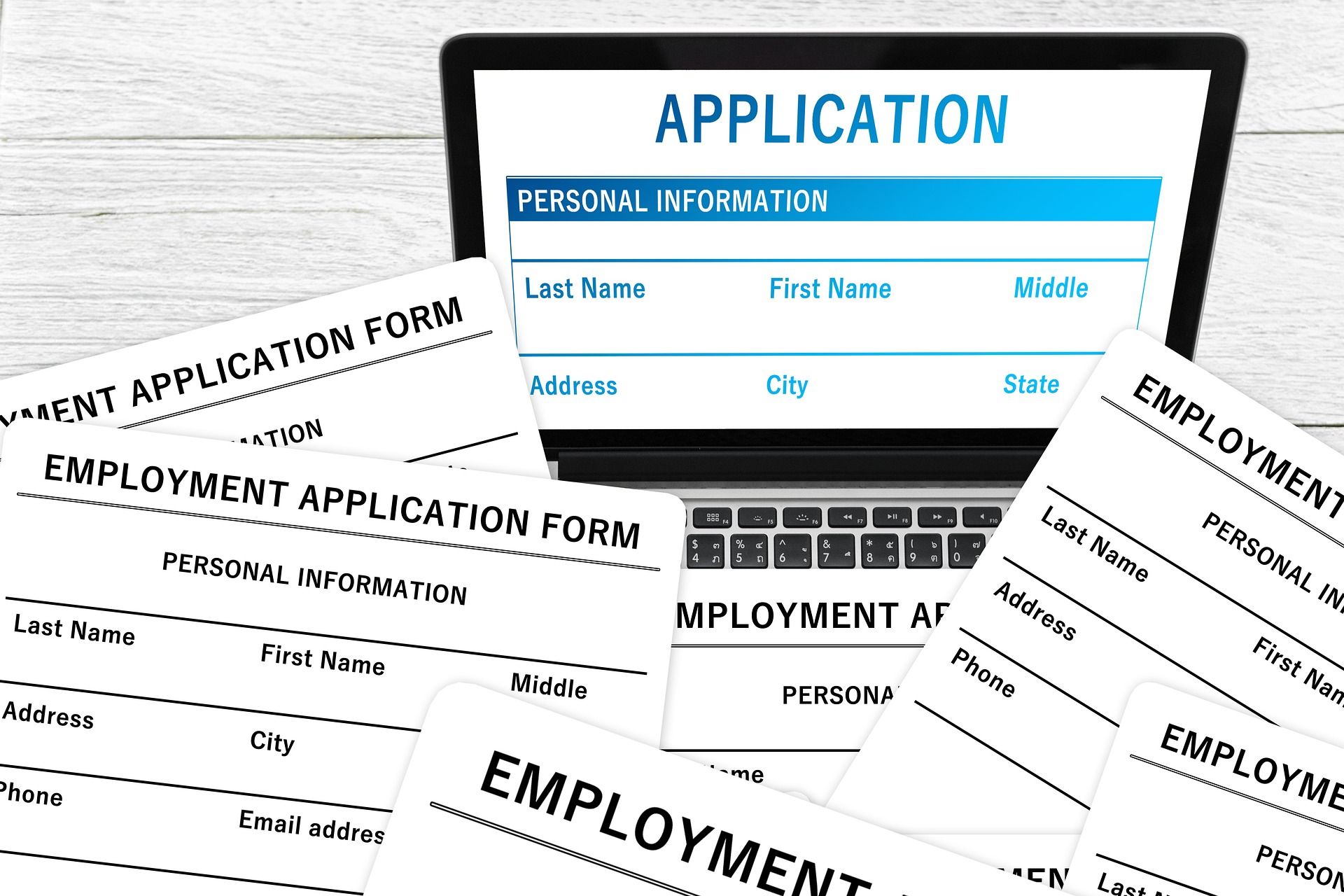Business
Obstacles to Remove From Your 2023 Job Search

We’re in the third year of what many call “unprecedented times,” which feels accurate when not compared to what earlier generations experienced during the Great Depression and World War II.
Today headlines of labour shortages and layoffs coexist. While companies strive to keep costs under control, consumers and employees demand increased corporate investment in ESG (Environmental, Social, and Corporate Governance), including DEI (Diversity, Equity, and Inclusion).
I ask myself:
- Will economic pressures drive companies to pause their ESG and DEI commitments?
- Will companies cut back on employee experiences?
- As employee demands increase, thus increasing their liability to their employer’s profit margin, will companies be more inclined to use AI, robotics, outsourcing, and contractors?
2023 will be a year employers and job seekers will be navigating many obstacles.
Inevitably, job searching is heartbreaking and frustrating. Therefore, job seekers will benefit from mitigating “obstacles,” real and perceived, so they are in a better headspace while searching for employment.
For a successful job search in 2023, remove these obstacles.
- Accept the fact that companies are wishy-washy.
Employers can’t predict the near-term economic future. Many economists foresee a brutal 2023 recession. Therefore, businesses are facing the challenge of hiring applicants who can assist them in staying afloat in a recession. Understandably employers are skittish when hiring, hence a lengthy hiring process or putting off hiring.
Continuously pursue multiple companies during your job search—create a pipeline of potential employers. Placing all your eggs (READ: hopes) in one basket (employer, industry) isn’t a wise job search strategy.
- Embrace the fact today’s job market is as competitive as ever.
Don’t be fooled by the media’s claim that it’s a job seeker’s market. Every job opening is fiercely competitive, especially those highly sought-after.
Getting a job in today’s job market isn’t a cakewalk. On the contrary, believing it’ll “be easy” creates frustration and heartbreak, obstacles that are difficult to overcome. Believing it’ll “be easy” is also why many job seekers don’t give 100% to their job search or take networking seriously.
- Not following up.
Following up consistently and persistently is key to networking, researching companies, and interviewing, which ultimately leads to job search success.
A peek behind the curtain: Many hiring managers purposefully don’t follow up with candidates. This is because they believe that candidates who follow up are the ones genuinely interested in the position. The logic behind this can’t be argued.
When you don’t hear back, follow up! Show you’re serious about the position and joining the company.
- Having a sense of entitlement.
Among job seekers, I see an entitlement epidemic. Hence, they’re increasingly victims of their unrealistic expectations and demands of employers.
A sense of entitlement is a massive turn-off with employers, putting you at a disadvantage. You’re not owed a job or to make a living. Get rid of any sense of entitlement you may have and accept responsibility for the consequences of your actions and life choices. (You’ll make better choices.)
- You’re a ghost online.
Having no online presence severely restricts your visibility to recruiters and employers.
A LinkedIn profile with a professional photo is much more visible and likely to be found than one that’s incomplete. To get employers to find you think “digital assets” instead of “digital footprint.” Having a blog, a website or writing LinkedIn articles showcasing you as an SME (Subject Matter Expert) in your field are excellent ways to get employers’ attention.
Your digital presence should demonstrate your value, not just that you exist.
- You don’t think in terms of “innovation.”
Candidates with more than textbook solutions are whom employers gravitate towards. Employers are looking for creative, out-of-the-box ideas and solutions, especially if the idea/solution will give them a competitive edge. Whether you work in retail or engineering, employers are hungry for ideas that’ll generate revenue, save time and money, and enhance profitability.
The next time you’re interviewing, offer an innovative solution to a pressing problem the employer has or a solution to one of the problems the position you’re interviewing for exists to solve. Try to entice your interviewer to say, “That’s a great idea. Thanks for bringing it up.”
- Your salary discussions are all about “the money.”
The current advice from so-called career and job search experts is “grabbing the bag” and “getting what you’re worth.” When layoffs happen, which they will throughout 2023, who will be laid off first? The employees who negotiated “what they’re worth” or the employees being paid market value?
You should, of course, negotiate a fair compensation package (e.g., base salary, benefits, paid time off, commission/bonus structure) in line with your current local job market. Being inflexible regarding your starting salary prolongs your job search. Also, should you find an employer that’s “stuck” and therefore agrees to your salary demand, you’re now an expensive employee. You don’t want to be the employee that has management always wondering, “Is Bob worth what we’re paying him?”
I hope 2023 is the year you find the right opportunity for you. If I can assist you in any way whatsoever, don’t hesitate to reach out. Best of luck in your job search.
______________________________________________________________
Nick Kossovan, a well-seasoned veteran of the corporate landscape, offers advice on searching for a job. You can send Nick your questions at artoffindingwork@gmail.com.
Business
All Magic Spells (TM) : Top Converting Magic Spell eCommerce Store


Product Name: All Magic Spells (TM) : Top Converting Magic Spell eCommerce Store
All orders are protected by SSL encryption – the highest industry standard for online security from trusted vendors.

All Magic Spells (TM) : Top Converting Magic Spell eCommerce Store is backed with a 60 Day No Questions Asked Money Back Guarantee. If within the first 60 days of receipt you are not satisfied with Wake Up Lean™, you can request a refund by sending an email to the address given inside the product and we will immediately refund your entire purchase price, with no questions asked.
Business
Turn Your Wife Into Your Personal Sex Kitten


Product Name: Turn Your Wife Into Your Personal Sex Kitten
All orders are protected by SSL encryption – the highest industry standard for online security from trusted vendors.

Turn Your Wife Into Your Personal Sex Kitten is backed with a 60 Day No Questions Asked Money Back Guarantee. If within the first 60 days of receipt you are not satisfied with Wake Up Lean™, you can request a refund by sending an email to the address given inside the product and we will immediately refund your entire purchase price, with no questions asked.
Business
CPC Practice Exam


Product Name: CPC Practice Exam
Click here to get CPC Practice Exam at discounted price while it’s still available…
All orders are protected by SSL encryption – the highest industry standard for online security from trusted vendors.

CPC Practice Exam is backed with a 60 Day No Questions Asked Money Back Guarantee. If within the first 60 days of receipt you are not satisfied with Wake Up Lean™, you can request a refund by sending an email to the address given inside the product and we will immediately refund your entire purchase price, with no questions asked.
-

 Sports13 hours ago
Sports13 hours agoIn The Rings: Curling Canada still looking for Canadian Curling Trials title sponsor
-

 News12 hours ago
News12 hours agoAfter hurricane, with no running water, residents organize to meet a basic need
-

 Politics13 hours ago
Politics13 hours agoN.B. election debate: Tory leader forced to defend record on gender policy, housing
-

 News13 hours ago
News13 hours agoAlberta government shifts continuing care from Health to Seniors Ministry
-

 News13 hours ago
News13 hours agoBuhai, Green and Shin lead in South Korea after 8-under 64s in first round
-

 News13 hours ago
News13 hours agoManitoba government halts school building plan, says other methods will be found
-

 News13 hours ago
News13 hours ago‘Significant overreach’: Ontario municipalities slam province over bike lane rules
-

 Sports13 hours ago
Sports13 hours agoMaple Leafs winger Bobby McMann finding game after opening-night scratch

































